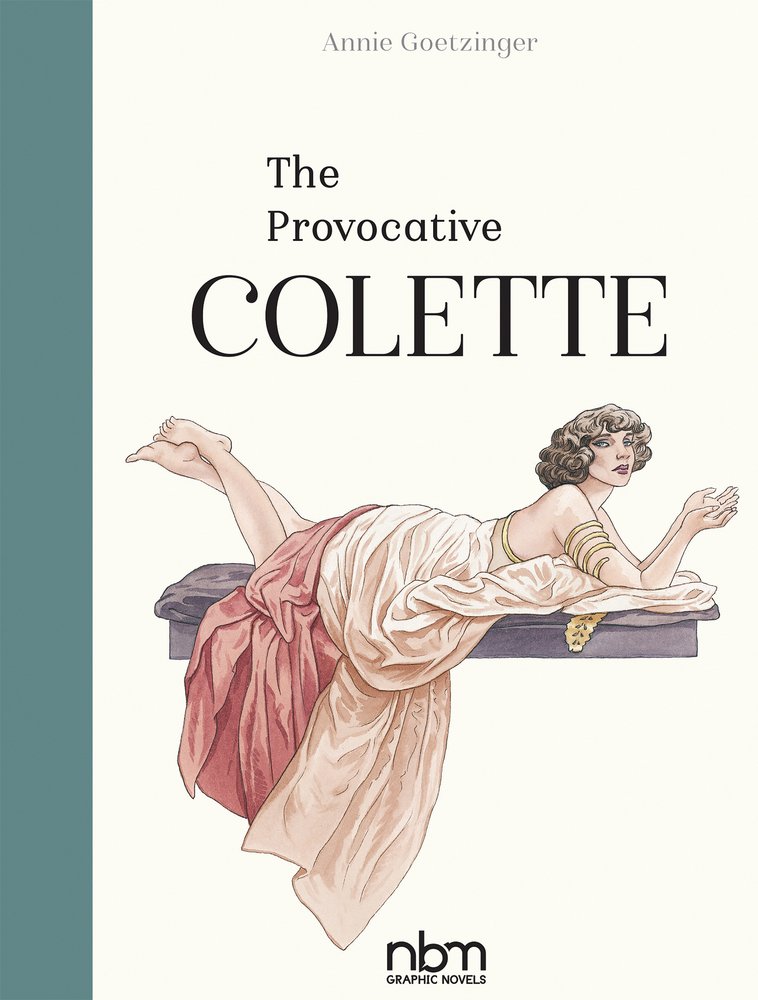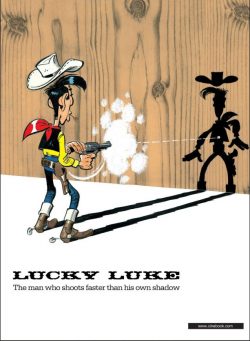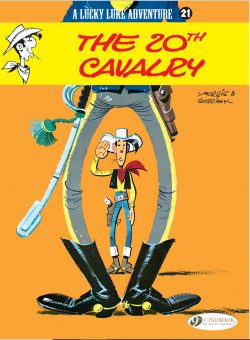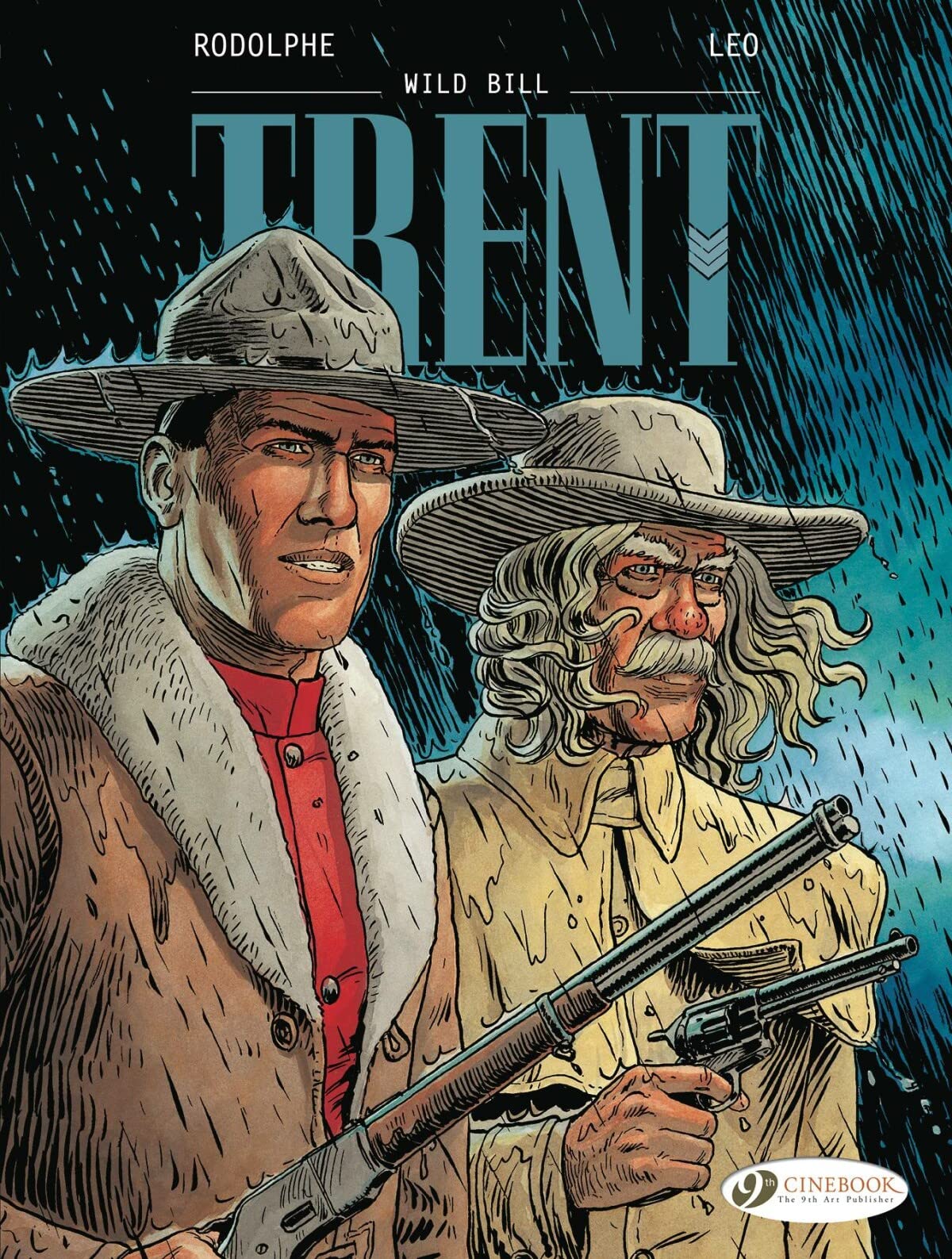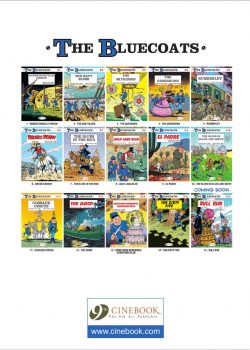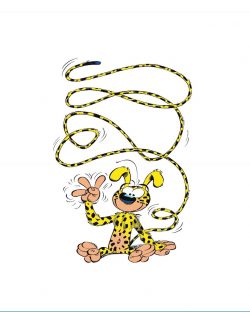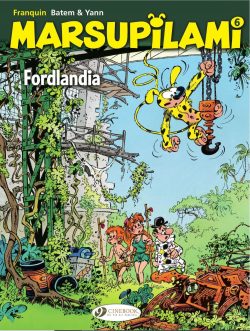
By Roger Leloup, translated by Jerome Saincantin (Cinebook)
ISBN: 978-1-84918-536-3 (Album PB)
In 1970, indomitable intellectual adventurer and “electronics engineer” Yoko Tsuno began her career in Le Journal de Spirou. She is still delighting readers and making new fans to this day in amazing, action-packed, astoundingly accessible adventures which are amongst the most intoxicating, absorbing and far-ranging comics thrillers ever created.
The globe-girdling, space-&-time-spanning epics were devised by monumentally multi-talented Belgian maestro Roger Leloup, who began his own solo career after working as a studio assistant and technical artist on Hergé’s Adventures of Tintin, beginning in 1953.
Compellingly told, superbly imaginative and – no matter how implausible the premise of any individual yarn may seem – always firmly grounded in hyper-realistic settings underpinned by authentic, unshakably believable technology and scientific principles, Leloup’s illustrated escapades were at the vanguard of a wave of strips revolutionising European comics.
That long-overdue sea-change heralded the rise of competent, clever, brave and formidably capable female protagonists taking their rightful places as heroic ideals; elevating Continental comics in the process. These endeavours are as engaging and empowering now as they ever were, and none more so than the trials and tribulations of Miss Tsuno.
Her first outings (the still unavailable Hold-up en hi-fi, La belle et la bête and Cap 351) were mere introductory vignettes before the unflappable troubleshooter and her valiant if lesser male comrades Pol Paris and Vic Van Steen properly hit their stride with premier full-length saga Le trio de l’étrange in 1971 (Le Journal de Spirou’s May 13th edition)…
Yoko’s cases include explosive exploits in exotic corners of our world, sinister deep-space sagas and even time-travelling jaunts. There are 30 European albums to date but only 16 translated into English thus far, and – ironically – none of them digitally.
First serialised in LJdS #2388-2391, Le feu de Wotan hails from 1984: a compelling science crime thriller that was the 19th astounding album. It reached us Brits as Cinebook’s 15th outing, delivering dark drama, murderous mystery and enthralling intrigue…
It begins as Yoko Tsuno arrives at Eltz Castle near Koblenz. She has returned to West Germany after being contacted by an old pal with a problem. Ingrid Hallberg is one of the world’s most esteemed classical musicians and has been hired by the Richter family to examine and assess their collection of ancient musical instruments. On discovering something extraordinary, she immediately contacted her old partner in peril…
Their first encounter (see The Devil’s Organ) was strange and deadly, and now, surrounded by a daunting team of private security guards and other suspicious characters, Ingrid has called in the freelance electrical engineer to assess the castle’s “acoustic qualities”. It’s a ploy masking the fact that Ingrid has uncovered another superweapon from history…
Sneaking around to avoid the suspiciously constant attention of architecture student Franz Thaler, Ingrid shows Yoko a bizarre futuristic battery erratically emitting electrical charges and a larger, deconstructed device in an attic. When Yoko assembles it, the result looks very like a giant gun…
As a storm builds that night, Yoko learns former resident Hans Richter was an experimental physicist who died in 1930s. He built both mechanisms and it appears the briefcase-sized battery connects to the larger device: a tool that fires bolts of lightning …it’s a Death Ray!
Before they can react, Franz steals the battery and locks them in, but his frantic escape is ended when lightning is seemingly pulled from the turbulent skies into the car he’s driving…
Acting quickly, Ingrid and Yoko recover the unharmed battery from the wreck, exploiting the guards’ uncharacteristic eagerness to cover up the event. Later, searching Franz’s room for clues, Yoko finds a radio and is startled to hear from someone who was giving the dead man orders…
A complex string of anonymised instructions and directions soon leads Yoko and Ingrid across country to Wupperthal and a secret rendezvous on an automated suspended railway train. They are being closely observed and followed…
Splitting up, Ingrid follows the “sky-train” as, in the first carriage, Yoko meets Professor Zimmer: Richter’s supervisor on the “Wotan’s Fire” project. He tells her all about the endeavour and how it ultimately killed Richter. In the course of their discussions they realise that his instructions to her had been intercepted and altered. Both have stumbled into a trap set by an unsuspected third agency…
Confronted by a gunman, Yoko deftly disarms the attacker, but her escape is foiled when everyone disembarks at Oberbarmen and she find two more villains waiting. They are holding a gun to Ingrid’s head…
However, when they trade the battery for her, Yoko retains crucial computer discs. As the thieves flee, she realises it’s all as the aged professor hoped. Allying with him and tech businessman/secret agent Peter Hertzel, Yoko learns the plot was allowed to unfold thus in an effort to locate a full-scale version of Richter’s device and foil plans to terrorise the world for profit…
Hertzel pays her a small fortune to help him stop them and soon she and her trusted comrades Vic Van Steen and Pol Paris are in action again…
After deducing where and how the terrorists will strike, the troubleshooters move rapidly. With Ingrid and Zimmer along for the ride, they are soon repairing the long-abandoned bunker installation Zimmer and Richter used to perfect the original weapon: charging more super-batteries to literally fight fire with fire. It works, but almost costs another life…
The final act opens with Yoko spectacularly boarding an oil supertanker at sea to convince the captain that his vessel is about to be an example and object lesson of ruthless criminals.
Yoko’s plan is risky: using their own death ray to counter the impending attack. However, she’s not so much worried about whose gun is bigger, only that by saving the ship and crew she must kill the crooks. That’s when she risks everything on a suicidal strategy, desperate to save the terrorists from themselves…
Rocket-paced, deviously twisted and terrifying plausible, this race against time and war against greed is a superb and mesmerising thrill ride that shows not just the smarts and combat savvy of our adventuring crusader but also her aiding compassion.
As always, the most potent asset of these edgy dramas is the astonishingly authentic and hyper-realistic settings, benefitting from Leloup’s diligent research and meticulous attention to detail. Tourists could use these pages as an A-Z and never get lost, except in rapturous wonder…
Wotan’s Fire is a magnificently wide-screen thriller, tense and satisfying, and will appeal to any fan of blockbuster action fantasy or breathtaking derring-do.
Original edition © Dupuis, 1984 by Roger Leloup. All rights reserved. English translation 2020 © Cinebook Ltd.

